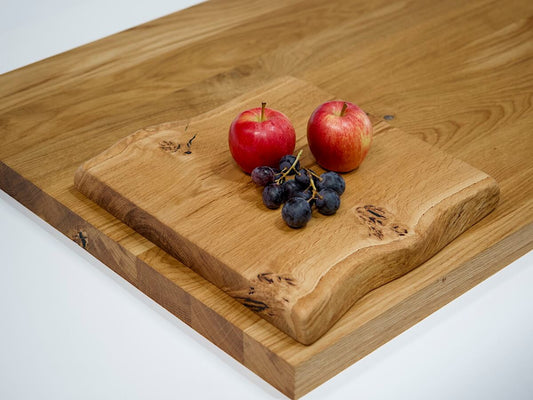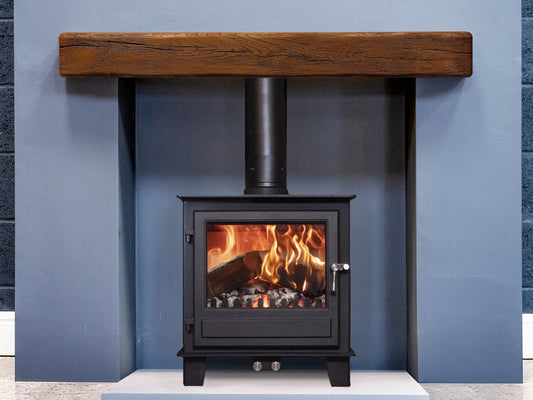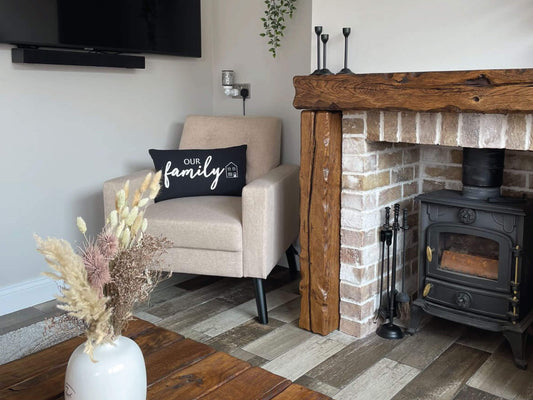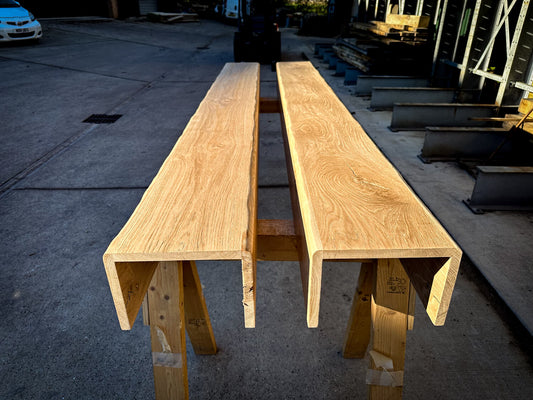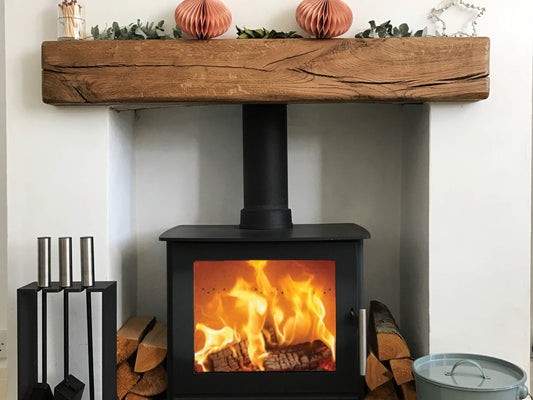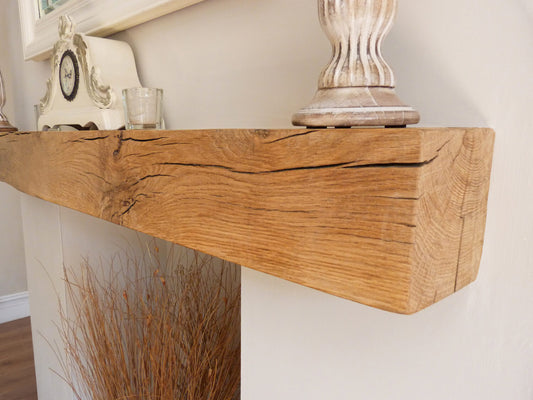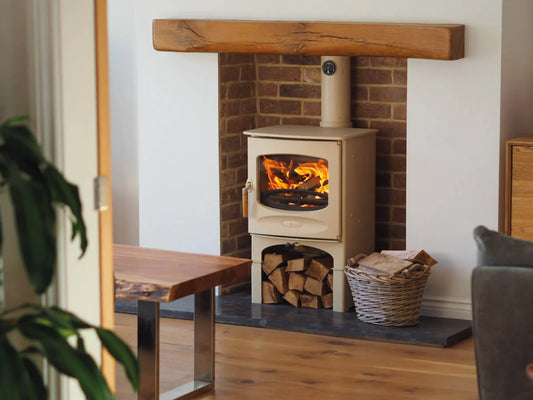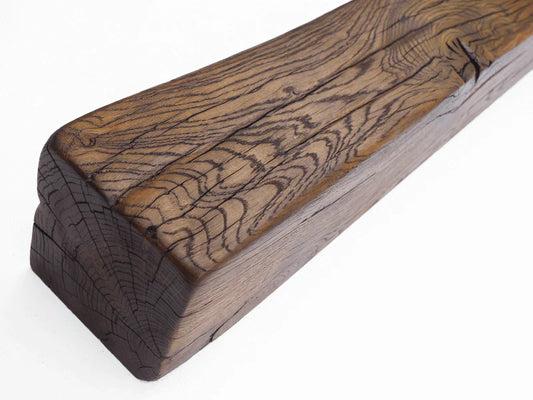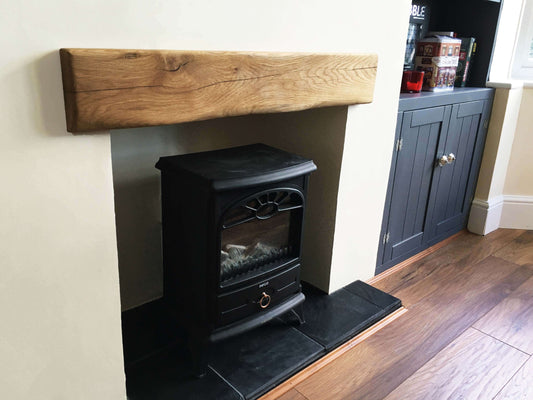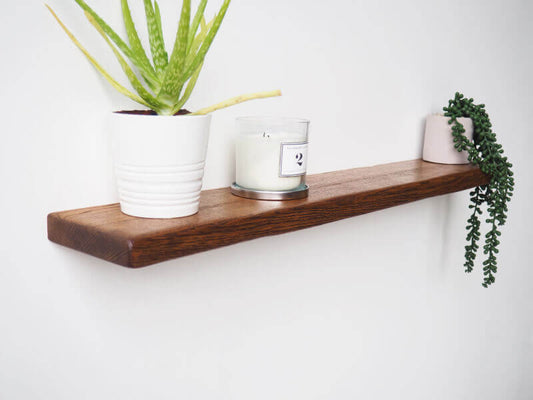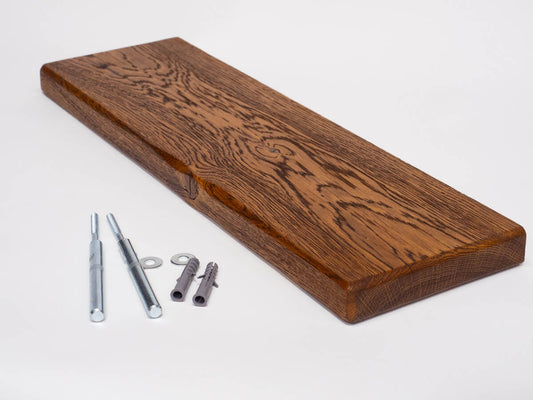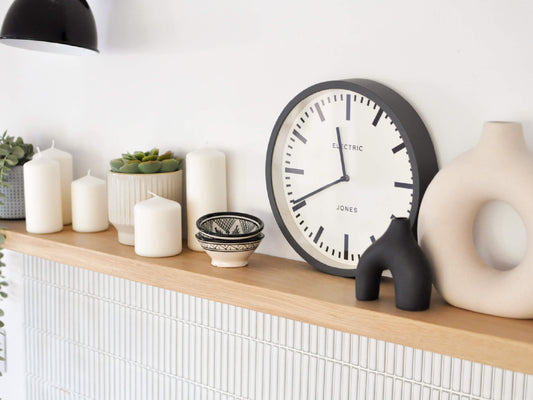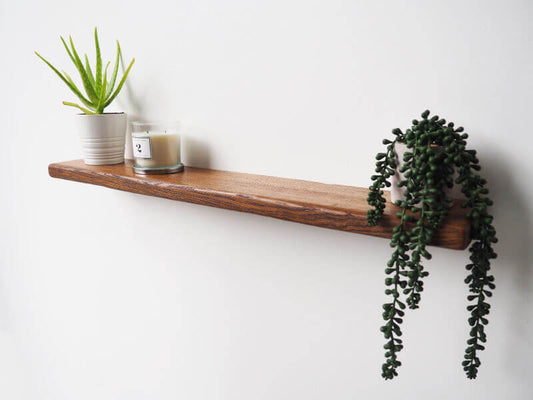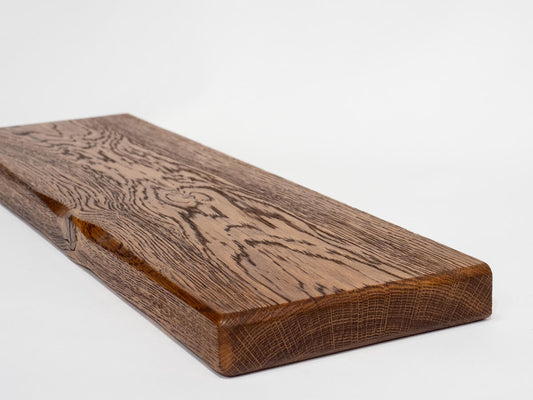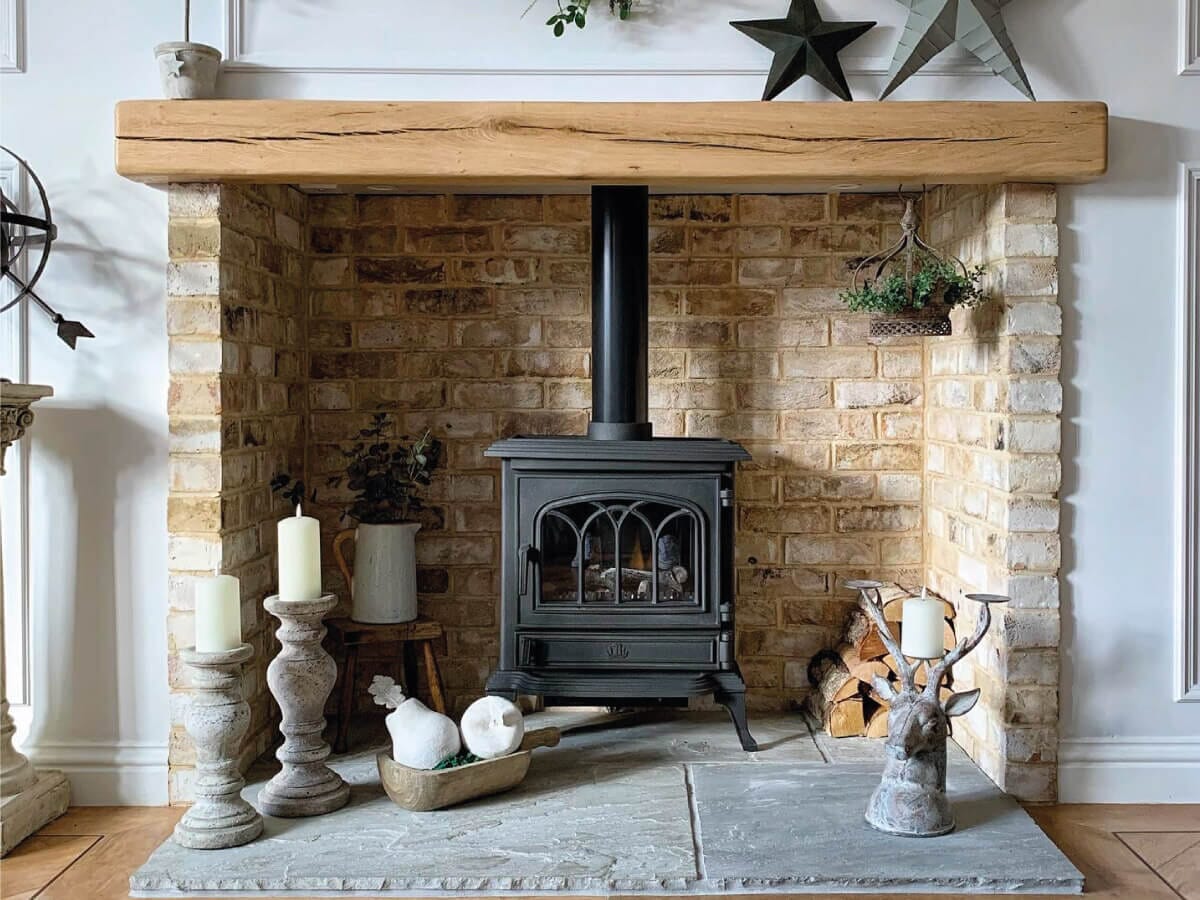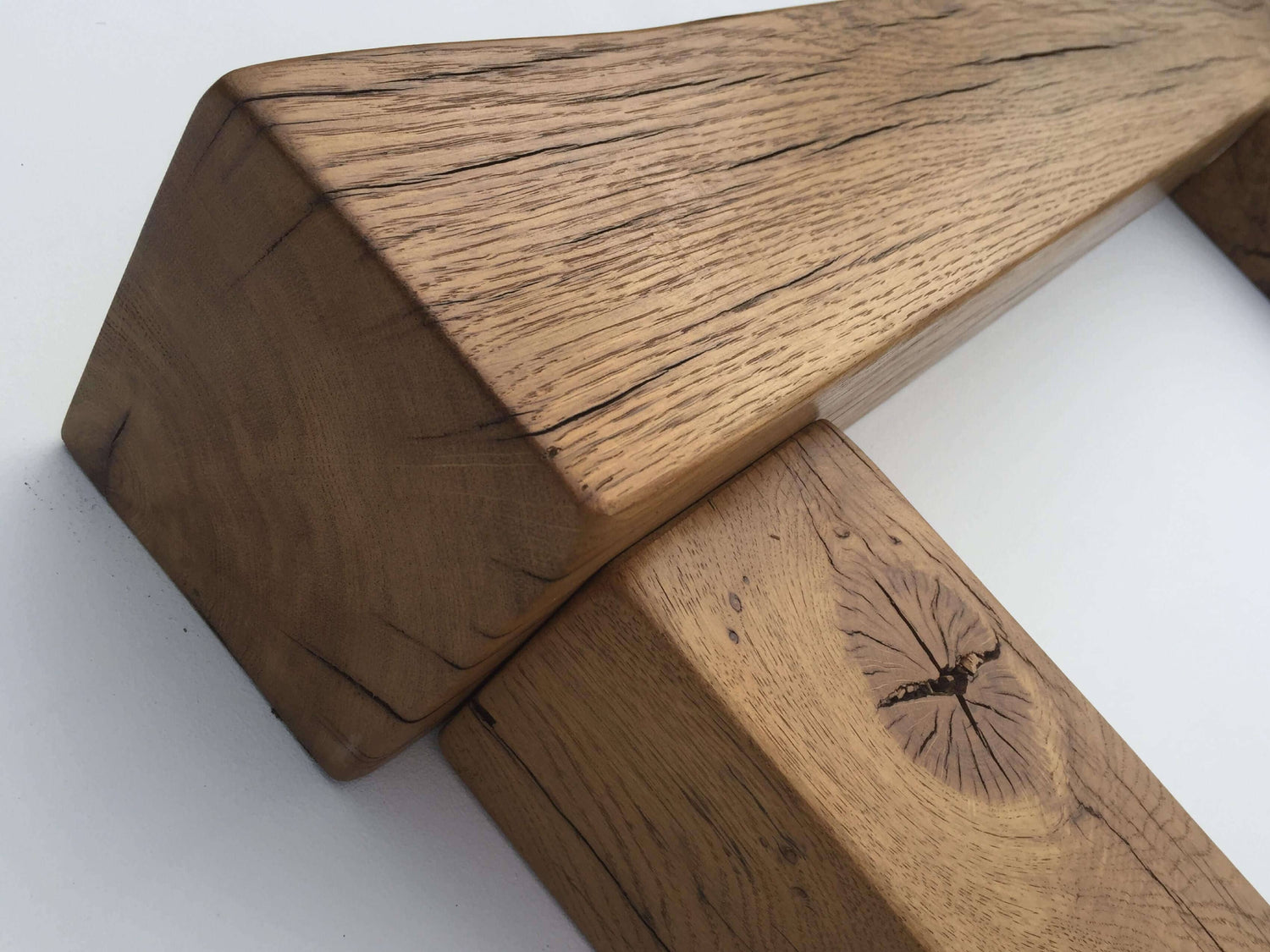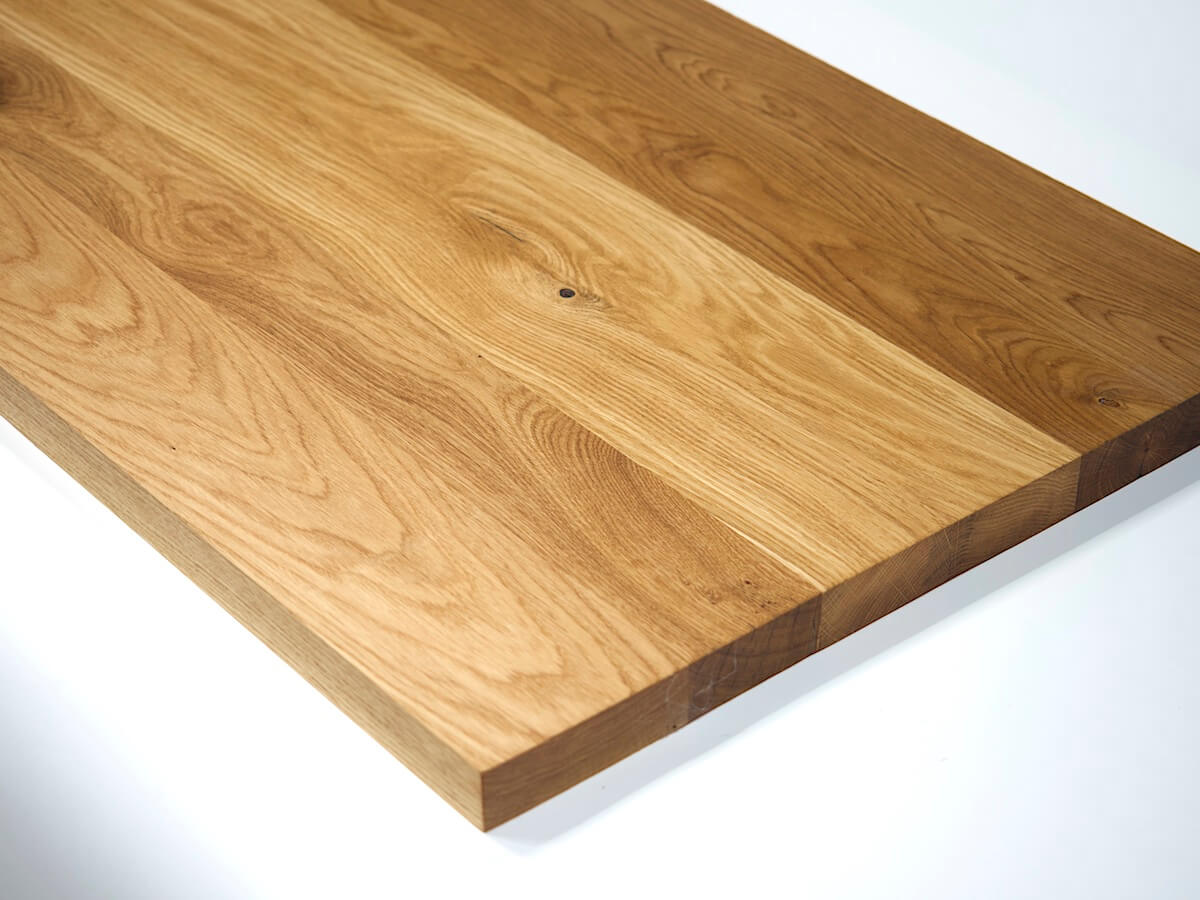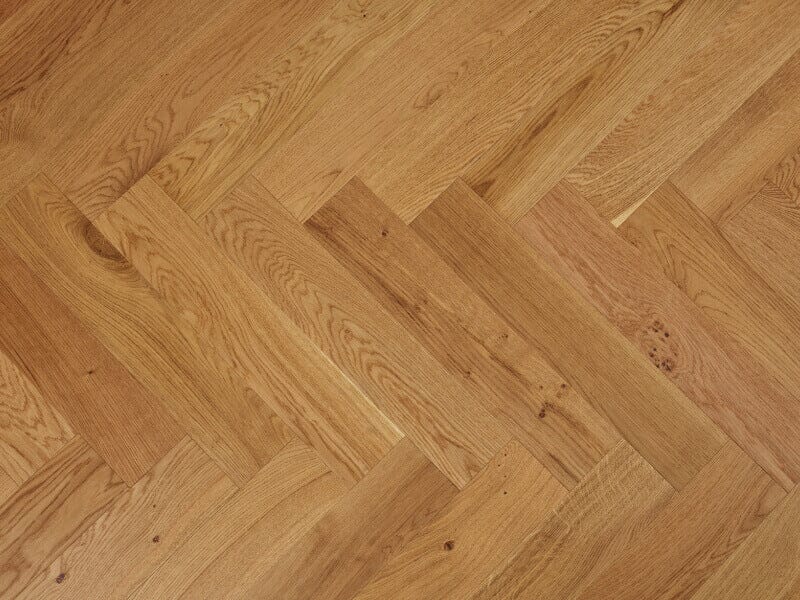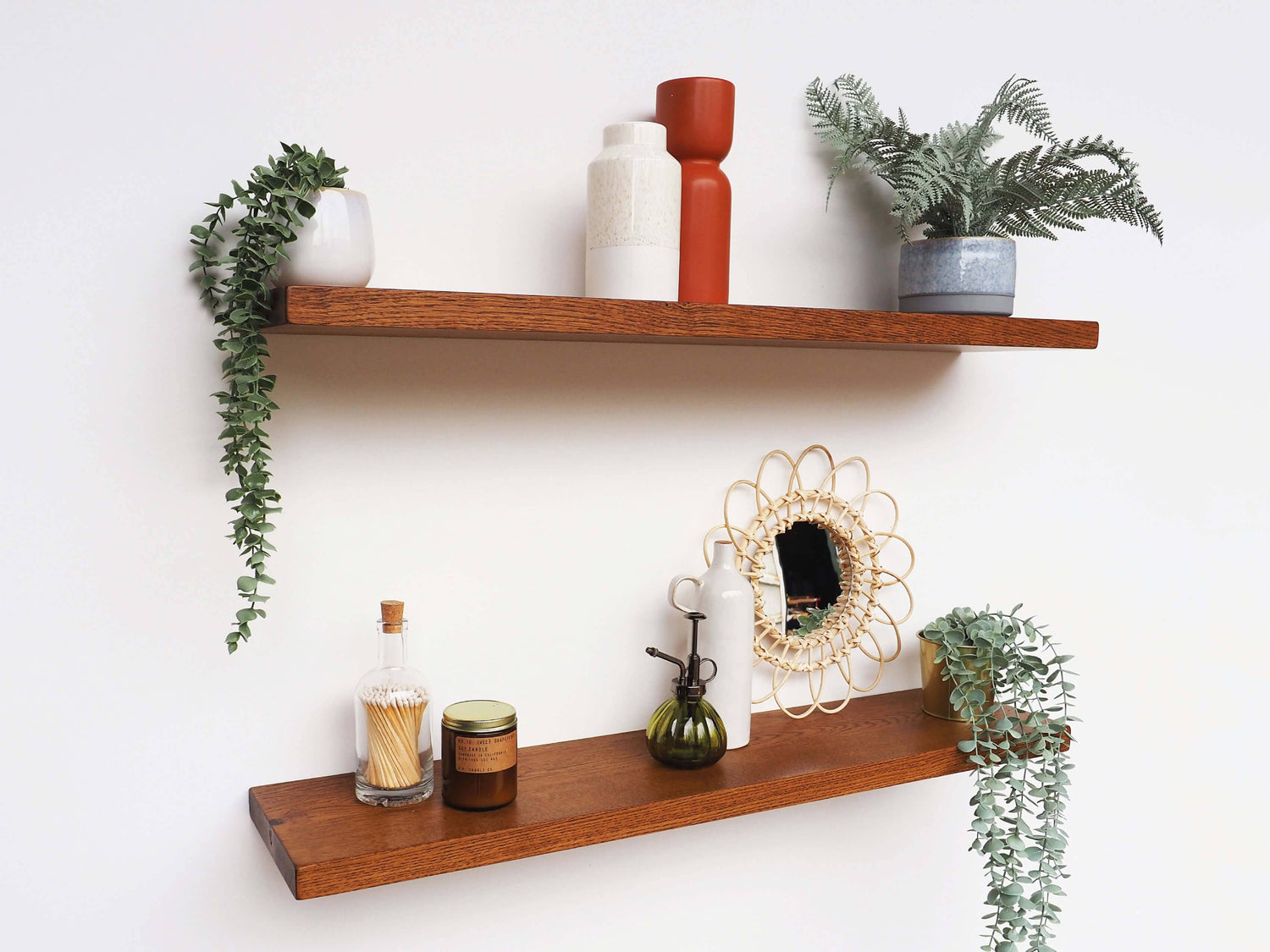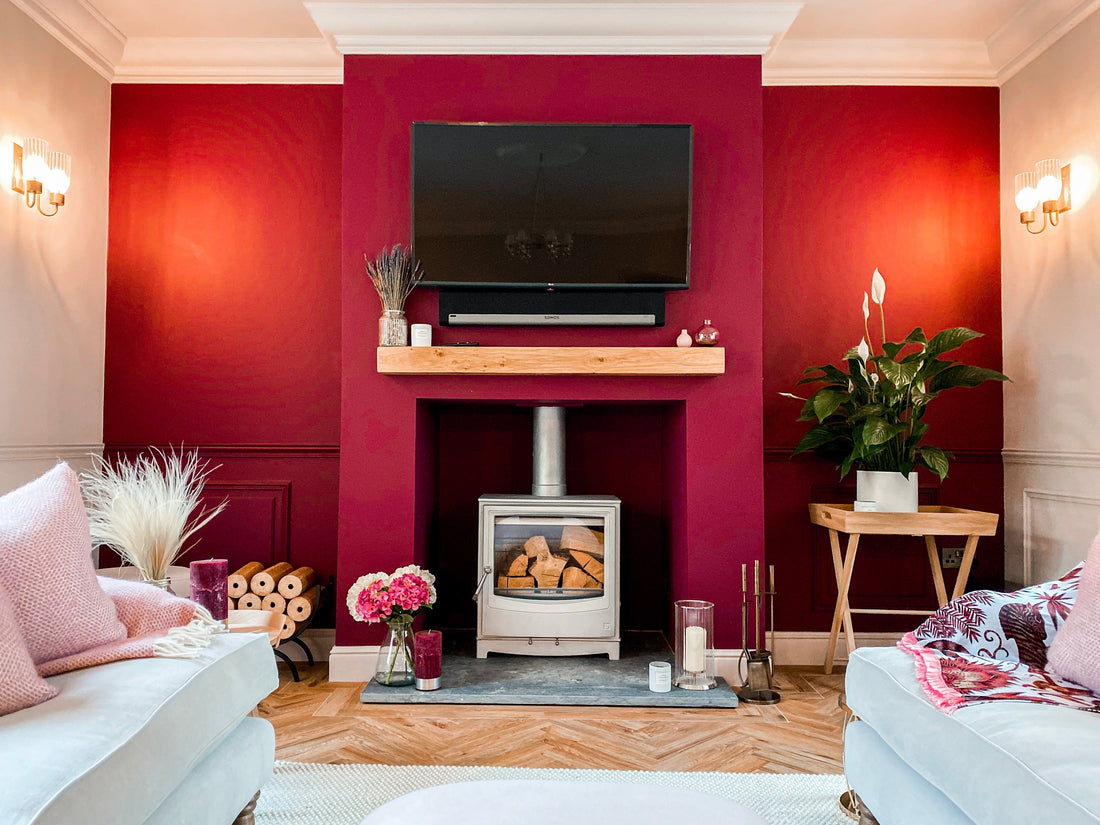
How Far Above A Wood Burning Stove Can I Install An Oak Beam?
Share
Here at Traditional Beams, we get asked this question a lot, however there are a few variables to consider when choosing the optimal place to install your oak fireplace beam.
Fitting your beam
If you are fixing to a solid wall then any of our beams will work perfectly. If you are fixing to a wooden stud frame, you can still use the fixings supplied with your beam however you may want to go for a smaller oak beam so it’s not too heavy.
If you are making a faux chimney breast yourself then you can ensure you put plenty of support where the beam will be positioned so that you can go with a heavier beam and use the guide below in the next section, to figure out where to place the wooden studs.
Our 19cm x 14cm beams do not coming with fixings, and our recommend fixing method will require a solid wall rather than wooden studs.
Some fireplace openings will have a concrete lintel just above the opening, if this is the case then it is likely reinforced with steel and you will want to install the beam slightly higher than this so that the fixings can be drilled into the wall the sufficient distance without hitting steel.
Fixing to a plasterboard wall? If so then you can opt for a beam that comes with keyhole fixings. (Oak beams which are 9cm deep or less) You can then purchase some plasterboard specific screws and wall plugs which can be used in conjunction with these fixings.
How far above a stove?
If installation above a wood burning stove, it is important that the solid oak beam is installed a safe distance away. Our oak beams are made from solid oak which means they are a combustible material.
If you are getting your stove and beam installed at the same time, this should be done by a HETAS registered installer. The installer will know how close the beam can be positioned in relation to the stove.
The stove itself should have a manual with details inside of how close it can be to combustible materials. If you don’t have your manual, you can usually find a manual online by searching for your stove make and model. The heat output of the stove can change the distance needed however the average distance from the stove to the beam is 450mm as a minimum. (See A in diagram) It is important to get this information from the manufacturer.
Electric and gas fires should also have some information within the manual for how far combustible materials can be positioned.

If you cant achieve the correct distance needed then you can opt for a non-combustible beam which will help you reduce the distance greatly.
How far away from the flue?
The manual will tell you how far away from the stove, the beam can be positioned but it will not tell you how far away from the flue it can be....
As a general rule, combustible materials should be placed 3 times the diameter of the flue pipe away from the flue. For example: if your flue pipe is 5” in diameter, then the beam will need to be at least 15” away from the flue, and this is in any direction (upwards or diagonally). (See B in diagram above)
You can purchase Twin Wall Flue Pipes which are insulated to allow you to decrease the distance needed. Most twin wall flues have a distance to combustible rating of either 50mm, 60mm or 70mm, in comparison to a single wall flue that should be kept three times its diameter away from combustibles.
Again if this isn't achievable, take a look at our non-combustible beams which ar moulded from our signature solid oak beams, ensuring the texture, grain, and natural beauty of real wood are perfectly preserved.
Changing Guidance
Guidance can change at any point so it is important to check official sources before installing your beam. If in doubt it is a good idea to get in touch with a HETAS registered installer for further guidance.
Here is the approved document for Combustion appliances and fuel storage systems from the government website as of 18th Oct 2022.
We hope this helps a little. As always we love seeing photo of your oak beams installed, so feel free to email us a photo of tag on Instagram.

